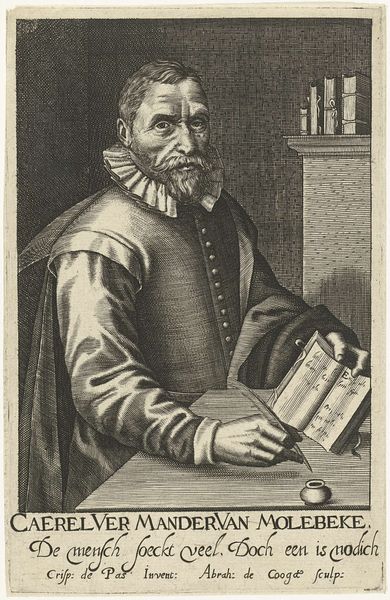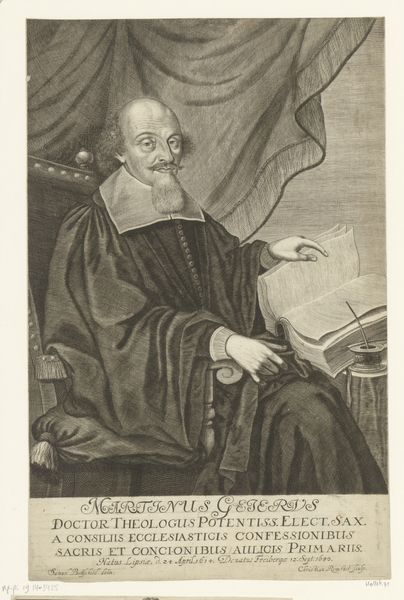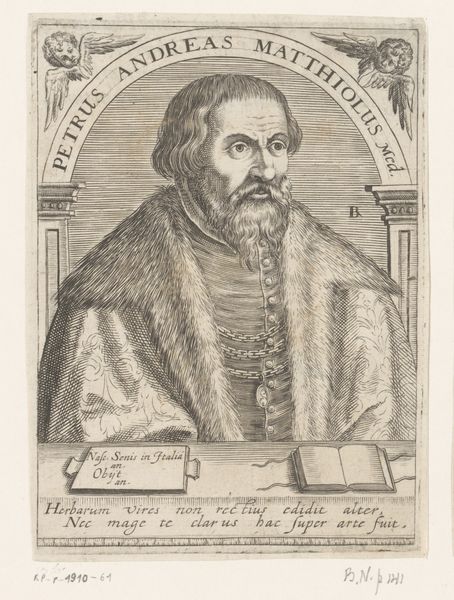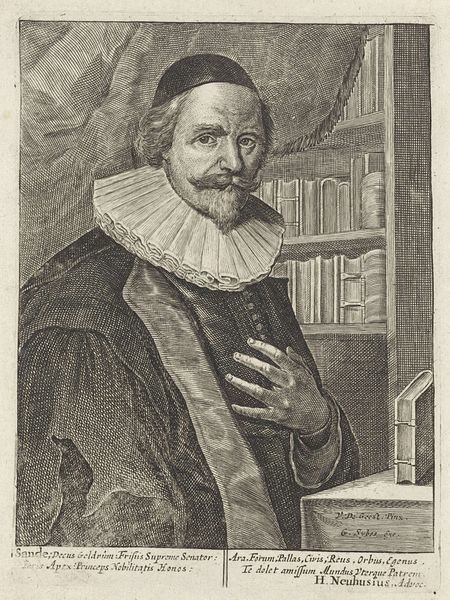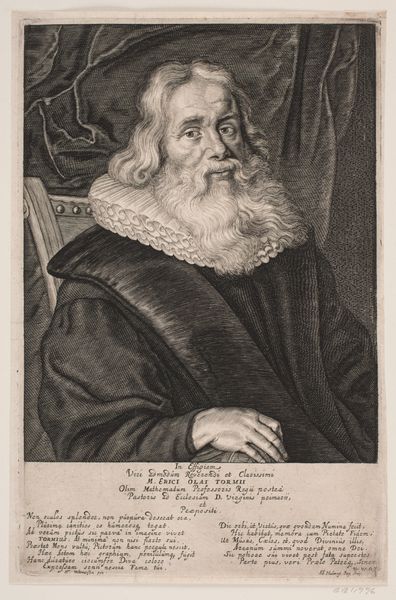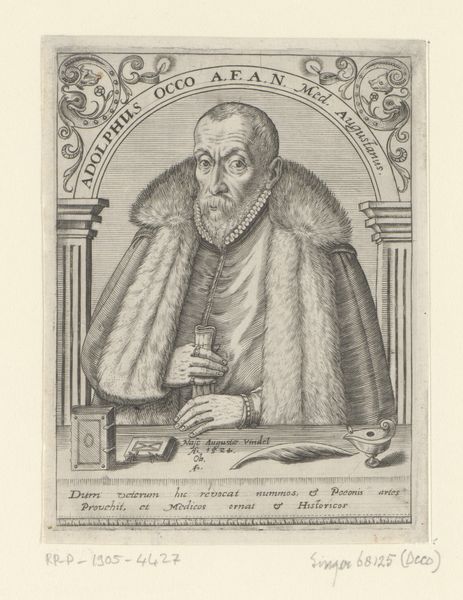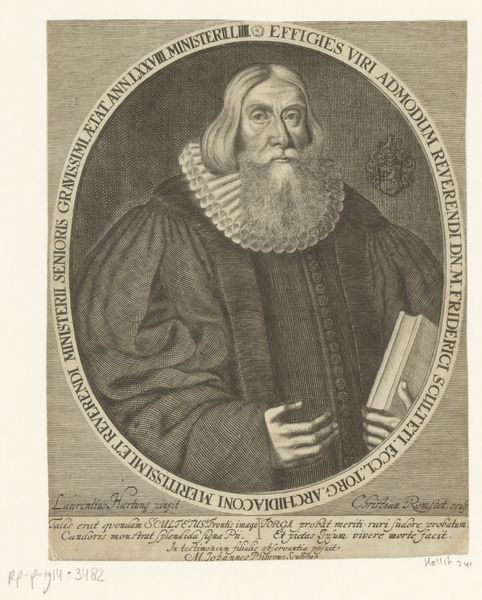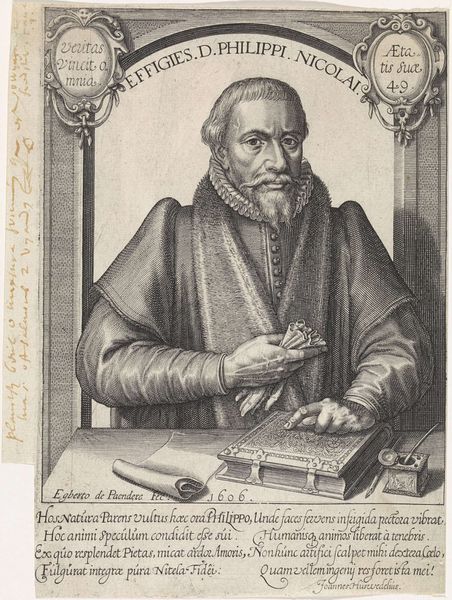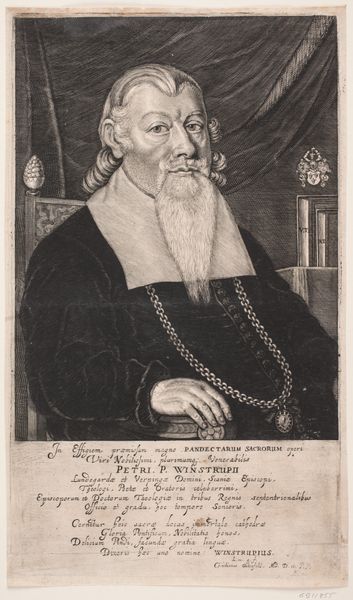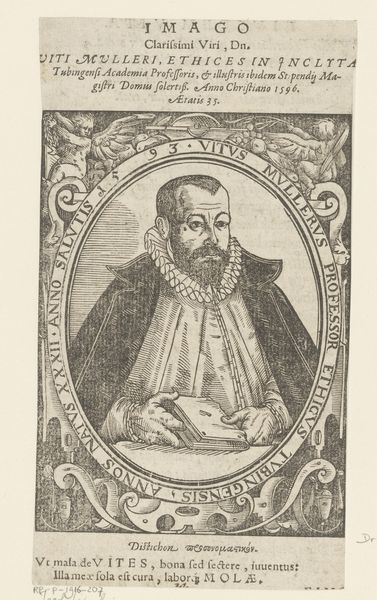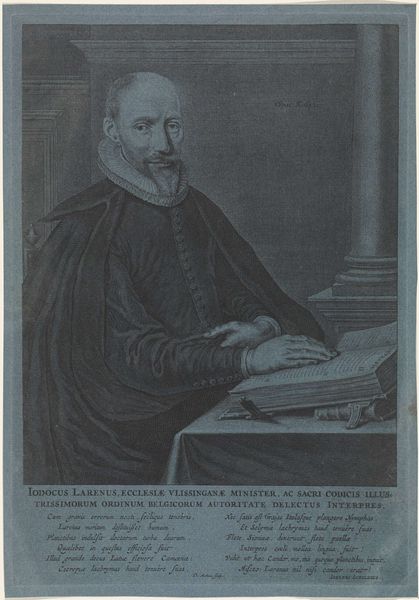
engraving
#
portrait
#
baroque
#
dutch-golden-age
#
history-painting
#
engraving
Dimensions: height 379 mm, width 261 mm
Copyright: Rijks Museum: Open Domain
Curator: Hubert Quellinus created this engraving, titled "Portret van Joannes Boelensz", sometime between 1655 and 1687. It's currently held at the Rijksmuseum. Editor: Ah, yes, I feel like I know this man already. There's a certain gravitas, wouldn't you agree? So immersed in his thoughts, and framed by that amazing bookshelf. I bet that room smells of old paper and candle wax. Curator: Indeed. What strikes me is how Quellinus positions Boelensz within his professional and intellectual environment, reflecting the Dutch Golden Age's emphasis on portraying individuals within their social context. Editor: It’s a space carefully curated to speak volumes. The crucifix speaks to devotion, the books to erudition, but it also strikes me as quite… controlled. Notice his expression. It's determined, thoughtful but his shoulders seem rigid. Is it the weight of responsibility perhaps? Or even sadness. Curator: Interesting you say that. The text inscribed at the bottom speaks of Joannes Boelensz's devout life. He was an Observant Franciscan friar; a member of a reformed branch that emphasized stricter adherence to the Rule of St. Francis. So his world had a certain gravity. Editor: The visual elements create such a complete story; from his writing pose with the quill, almost frozen in a pensive moment, to the folds of his simple dark robe. It's a study in contrasts; opulence alongside austerity, all meticulously rendered by Quellinus. Did this represent, for you, something important in the zeitgeist? Curator: Precisely. Portraiture served a crucial function for representing status, and it did so for professional orders as much as wealthy merchants. The inclusion of that heavy bookshelf communicates more than learning – it conveys legitimacy and scholarly work which helps legitimize religious knowledge. The level of detail, particularly in the textures, further reinforces the importance of observation, of learning as a foundation. Editor: You're right, it's all so purposeful. All these details create the impression of both vulnerability and strength. I keep finding the small crucifix and the row of bound volumes speaking, perhaps of something very difficult, perhaps being the only moral figure of the day in times of uncertainty. What would people from his time perceive, do you think? Curator: The symbols would’ve spoken directly to their beliefs and understandings of piety. People recognized the visual vocabulary that communicated values. This wasn’t just a picture; it was a statement that intertwined identity with moral authority, a common message in Dutch Golden Age artwork. Editor: Well, the Golden Age sure knew how to tell a story through images. Now, stepping back and seeing it all come together is definitely something unique!
Comments
No comments
Be the first to comment and join the conversation on the ultimate creative platform.
